If you had asked me several years ago what I thought about Yakuza 2, I would have referred to it as “peak Yakuza” — a title that has stuck despite Yakuza 0 slightly overtaking it as my favorite.
And now that Yakuza Kiwami 2 has come around, it may possibly take that title for itself.
Yakuza Kiwami 2 is situated in an interesting position within the series. Canonically, it comes after Yakuza Kiwami, but it comes after Yakuza 6: The Song of Life in terms of structure and design.
Why is this important? Because Kiwami 2 owes a good deal of its success to this fact. It already had the narrative in place since this is a remaster of a game from 2006, but what it lacked was the design and structure to match — something that it ultimately received from Yakuza 6.
If you’ve read my preview of Yakuza Kiwami 2 from last week, then you might have an idea of how jarring my transition from the most recent entry to this has one been. In the matter of a few months, we went from what I felt was one of the weakest in the series, to the one that many — including myself — saw as one of the best.

I was terrified at first, but at least I knew the story would already be leaps and bounds better than 6. It’s part of what made the original so great, after all.
The year is 2006 and much has changed for protagonist Kazuma Kiryu since the events of Kiwami/Yakuza 1. Almost all of his old friends and family are dead, he’s no longer officially affiliated with the Tojo Clan and is now living out his days in peace with Sawamura Haruka, the girl who found herself in the the thick of the plot in the first game.
But this won’t be a peace that lasts.
While the two of them are at a graveyard paying their respects to the departed, they are met by current Tojo Clan chairman Yukio Terada who is soon assassinated before their very eyes. Now, at a speed faster than the bullets that put him in this predicament, Kiryu must head to Sotenbori, Osaka and broker a peace agreement with the Omi Alliance — the very group who assassinated Terada — in order to avoid an all-out gang war from breaking out across Japan.
And true to any Yakuza game, there will be an assortment of subplots that he will find himself in the midst of along the way. A mysterious connection between the police and a Korean mafia group, two seperate coups, a rivalry with a dragon from the West, a tournament to determine the number one Cabaret Club in Japan, overly-aggressive realtors and even a romance with a police detective.
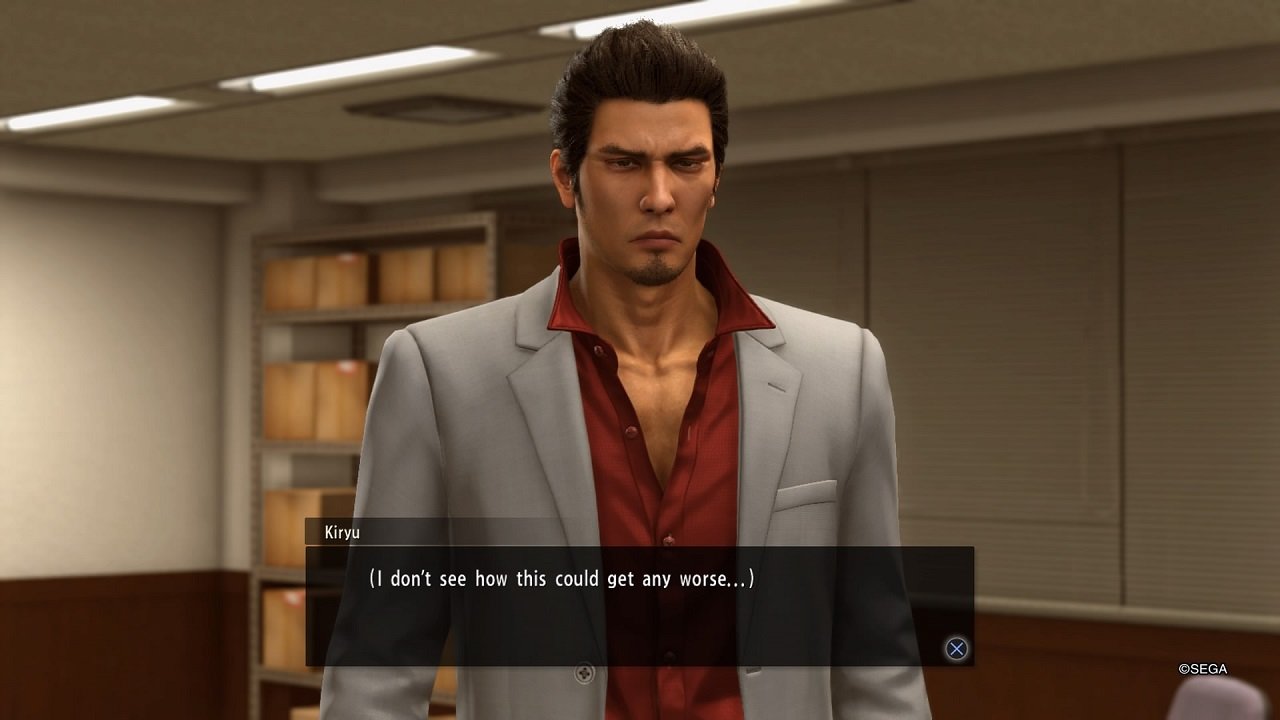
This might be exhausting for a normal person, but it’s just another (unfortunate) day in the life of Kazuma Kiryu.
No doubt you’re looking at all these story elements and have come to assume that Yakuza Kiwami 2 is a total mess. However, that’s where you would be wrong. The story is structurally cohesive and intelligently told, with just enough information being given to the player at just the right moments; and the narrative remains focused throughout, never lingering on one part for too long. More than anything else, though, it’s just flat-out interesting; and you’ll soon come to learn that though this might be the second game in the series, many of the incidents detailed throughout, serve as a catalyst for events that occurred in the first.
But this success isn’t solely due to strong storytelling, it also owes a huge debt to the characters who lead it. Kiryu goes without saying, but the story wouldn’t be half as good as it is without deuteragonist Sawara Kaoru in the mix.

Sawara Kaoru is basically the antithesis of Kiryu — she’s a detective so well-known for her work in law enforcement that she’s earned the nickname, the “Yakuza Huntress,” while her counterpart earned the nickname “The Dragon of Dojima” for his exploits in the criminal underworld. Yet, it’s that same dichotomy between them which makes their relationship so memorable.
When they first meet, she doesn’t hold Kiryu in high regard. Not just because of his affiliation with the Yakuza, but because of her long-held belief that the Tojo Clan were responsible for her parents’ murder. She’s cold, rude and though she’ll help Kiryu in most fights he gets into, she’s only doing it because she has to. However, as she starts to see Kiryu for who he truly is, she becomes more open with him, letting both the player and him learn more about her. We start to see more of her backstory and through various circumstances eventually come to realize that she has a deep connection to the overall story.
And by the time everything is settled, you’ll likely love Kaoru almost as much as Kiryu does; if not for how thoroughly fleshed-out she was, then because of those savage scorpion kicks she can unleash on men twice her size.

None of this is to sell characters like Gouda Ryuji or Goro Majima short, though. As mentioned in my preview, Gouda Ryuji, the current leader of the Omi Alliance’s Go-Ryu Clan, is a breath of fresh air compared to other villains who rely on subterfuge and trickery to move up in the underworld, instead relying on brute force to get what he wants. Meanwhile, Goro Majima has also left the Tojo Clan following the events of the first game and has since started a (mostly) legitimate construction company and became the leader of Purgatory. You even get to see how it all happened in a brand-new, albeit somewhat underwhelming mode where he serves as the main character.
That said, all of this (other than the new mode) is practically identical to the original Yakuza 2. You could buy it right now and not miss a thing outside of the superior graphics, a few altered/repurposed scenes and areas, as well as some new tracks (such as during the “Piercing Blade” scene). Really, what elevates Kiwami 2 to new heights is the combat and Dragon Engine — the very source of my aforementioned fears when starting my playthrough.
My complaints about 6 were many, but a good deal focused on the damage the untuned Dragon Engine had wrought. Combat had zero depth thanks to Kiryu only having one style, many heat actions were missing, the new exp system made it a chore to gain specific attributes and Kiryu just lacked the oomph one would expect from someone who earned the nickname the Dragon of Dojima.
Fortunately, the refined Dragon Engine allows Yakuza Kiwami 2 to fix (almost) all of that.

It’s a bummer, but there’s still only one combat style. However, thanks to the numerous heat actions and techniques in general that Kiryu can unlock, along with the ability to not just use various weapons in battle, but also stash away the ones he “finds” for future use, you’ll eventually find that there are still plenty of ways to dispatch whatever thugs, nouveau rich or yakuza come his way. Throwing them through the window of the closest convenience store and sticking their head into a microwave oven is always an option (and my personal favorite), but why not mix things up by using some ancient martial arts taught to you by Komaki or Granny White, or maybe play dirty by using some pliers or a stun gun?
With all these techniques at his disposal, Kiryu feels like a genuine powerhouse and it’s not hard for him to reach that point either. The same exp system from 6 is used here, but it’s far easier to amass the various attributes needed to buy the skills you want. Not only can all five be obtained from street fights by default, but some restaurants can give as much as 90 exp in a single attribute (this doesn’t even take food combos into account). The only downside is that many of the stronger techniques have inflated costs to compensate — they’re worth it, though.
I can’t overstate how appreciative I am of this refined Dragon Engine and the upgrades to combat that come with it. Fighting isn’t all there is to the Yakuza series, but it is the leading way disputes get resolved throughout, and there’s nothing worse than entering such disputes and wishing they were over as soon as they began.
Not only that, but since I found myself enjoying combat again, it made the moments when Kiryu wasn’t embroiled in it more meaningful — feeling more like a reward, rather than an escape.
And one such way Kiryu can reward himself for coming ever closer to solving one of Yakuza Kiwami 2’s many mysteries is by playing one of its many minigames.
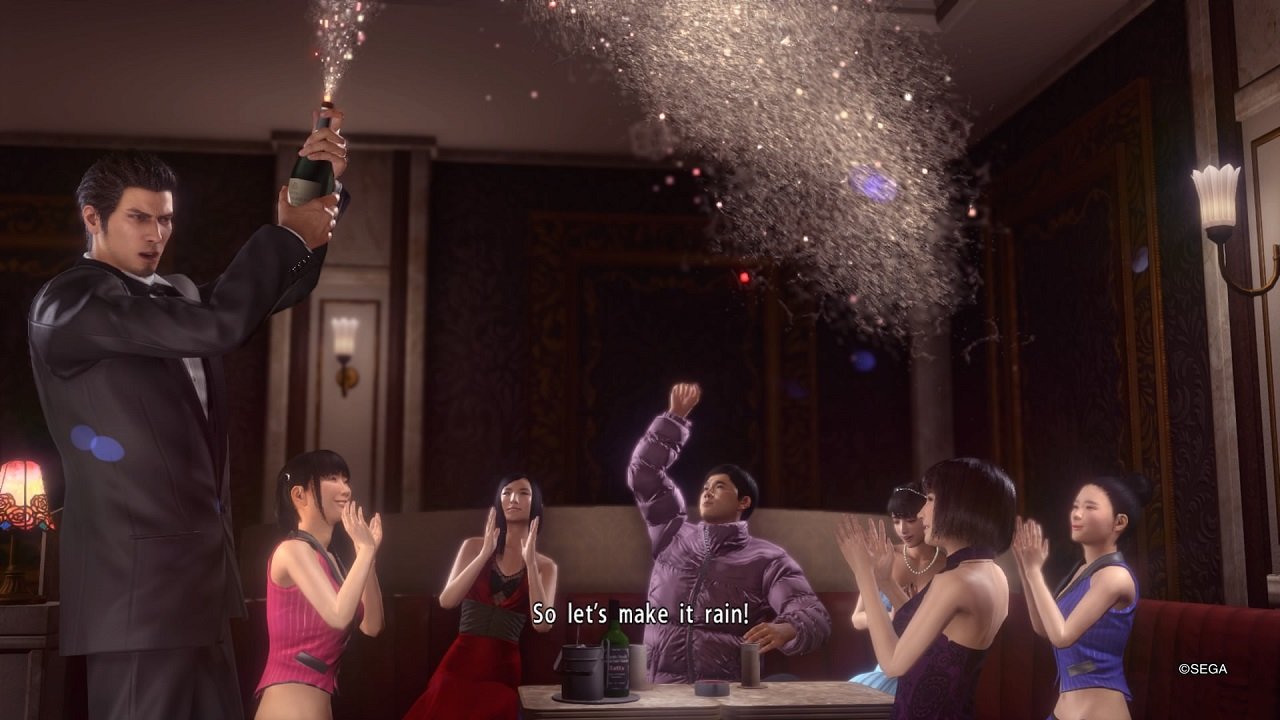
Not much has changed in terms of tone or structure within Kamurocho since the last game, so many of the minigames from that one are present here as well. If you want to gamble, games such as dice, card games, shogi and mahjong are available, while those hoping for more light-hearted activities can head to the batting cages, Club SEGA to play Virtual-On or Virtua Fighter 2 or to a bar for some darts and karaoke. And if you’re feeling particularly adventurous, why not try your hand at some challenge pissing? Just don’t bother looking for Club Adam — it’s there, but you can’t go inside anymore.
These same activities are also available in Sotenbori — which looks practically identical to the one from 0 with the addition of some parts from the now-removed Shinsekai — except there’s no equivalent for Kamurocho’s Gravure Photo Studio and the batting cages are replaced by golf.
Meanwhile, if you’re looking for something a little more involved, then you can head to Purgatory beneath Kamurocho’s West Park to participate in the Underground Arena, remain above ground to help Majima ward off a group of malcontents looking to steal the deeds for Kamurocho Hills via the Clan Creator or head on over to Sotenbori where instead of visiting a hostess club, you help Yakuza 0’s Yuki run a struggling one known as Four Shine in a bid to make it the best in all of Japan.
On the other hand, if you don’t want to be entirely removed from an ongoing narrative then you can have Kiryu do some Substories — mini-episodes that explore the lives of the people that he meets during his travels.
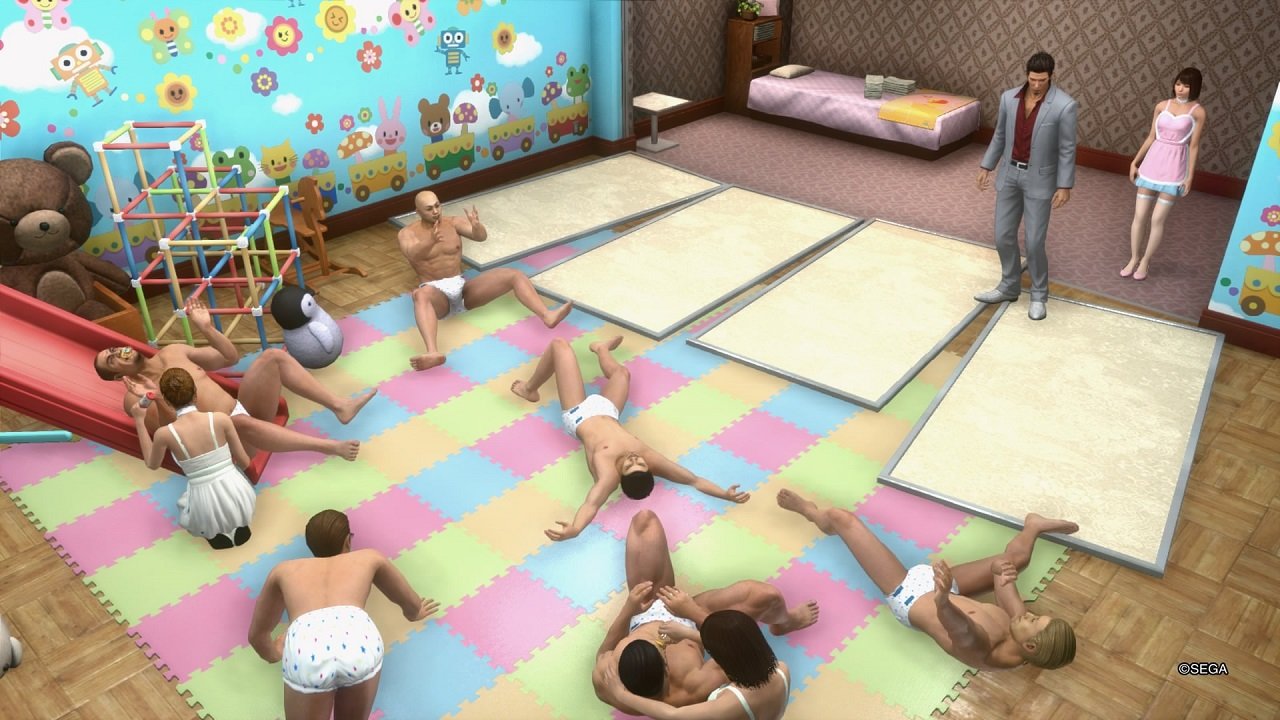
What I’ve always enjoyed about Substories is how they manage to give the world of Yakuza an extra layer of personality and depth. When you’re worrying about an imminent gang war or the Korean mafia, it’s easy to lose focus on the world around you and forget that some people just care about a stuffy nose interfering with their music career or scamming others out of their hard-earned yen.
These aren’t stories devoid of context either. Regardless of the tone, these Substories make total sense within the world of Yakuza and are ones that a player is likely to come across in their own. For instance, one pokes fun at Kiryu’s technological illiteracy when a sale representative tricks him into buying what he believes is a high-quality modem. Unfortunately, he didn’t read the fine print and learns all too late about the ridiculous surcharges attached and high cancellation fee, leaving him with little choice but to opt out using his fists. Meanwhile, another one reveals his crippling lack of knowledge when it comes to most things not concerning the underworld. After a disagreement with some yakuza, their boss attempts to make things right by inviting him to his “favorite place” which turns out to be a parlor dealing in psychosexual infantilism. He tries to leave, but the boss, offended by Kiryu’s unwillingness to accept his goodwill, picks a fight with him. Hilarity ensues.
As you might have noticed, a common trend among many Substories is that their plots are often resolved through more fighting — a criticism I raised during my Kiwami review. Fortunately, the ones that play out this way aren’t as numerous and they’re usually shorter in length too. And even if they weren’t, they’re unlikely to burn you out since the game does a good job of spacing them out and not throwing too many at you at once. Not to mention you’ll also probably clear them out rather quickly anyway thanks to an early ability that marks all available Substories on your map.
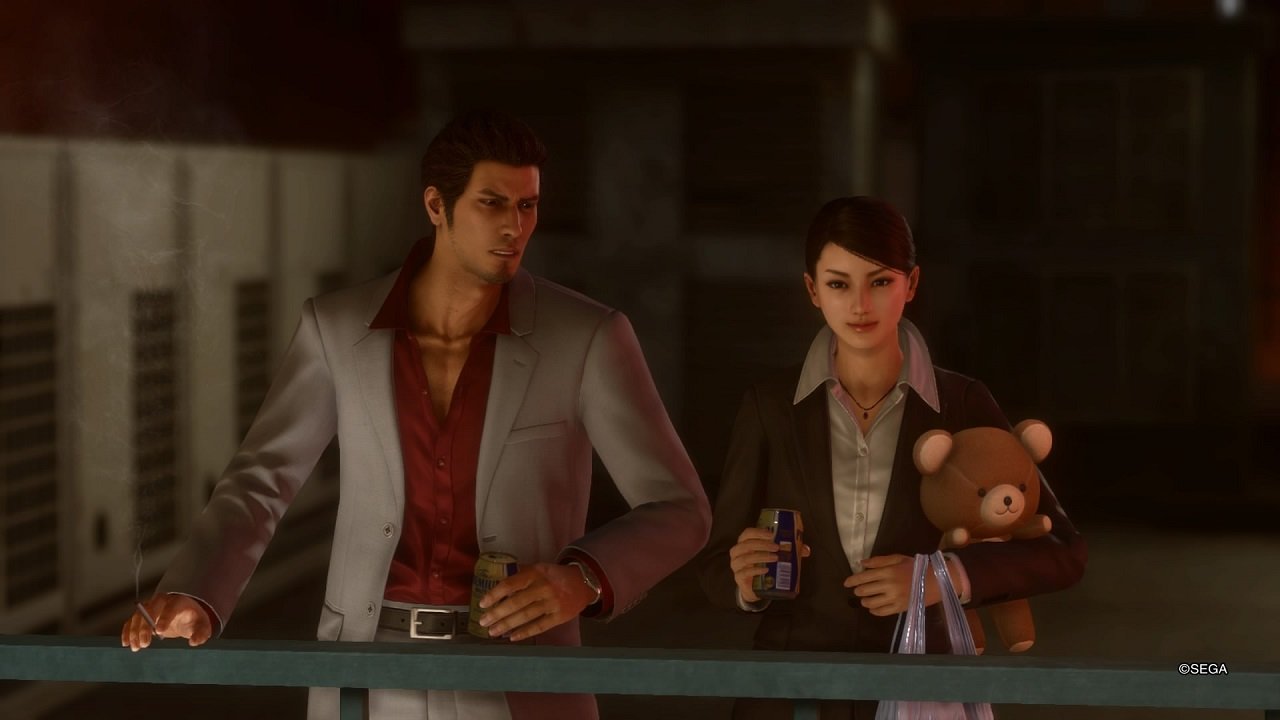
With Yakuza Kiwami 2’s penchant for switching tones and themes at the drop of a hat, it’s easy to look at it all and say that the overall game lacks focus. Indeed, that would be true if this were any other game. But for this one? Nope. That ludonarrative dissonance is what gives it its charm.
Seriously, what game would have you get assaulted by a horny, elderly woman before going to a feudal castle to fight ninja, samurai and tigers with your bare hands, then enjoying a simple tour around the city with your adoptive daughter when all of that is over? Trust me when I say there were many times when I should have been looking into the identity of some mysterious figure or tracking down a lead only to decide it would be a far better use of my time to have Kiryu run off to Club SEGA or Four Shine instead. The funniest part? Kaoru can be there the whole time and will never say a thing about it.
If that doesn’t make for a unique game, then nothing will. And with everything that Yakuza Kiwami 2 offers, that uniqueness is out in full force.
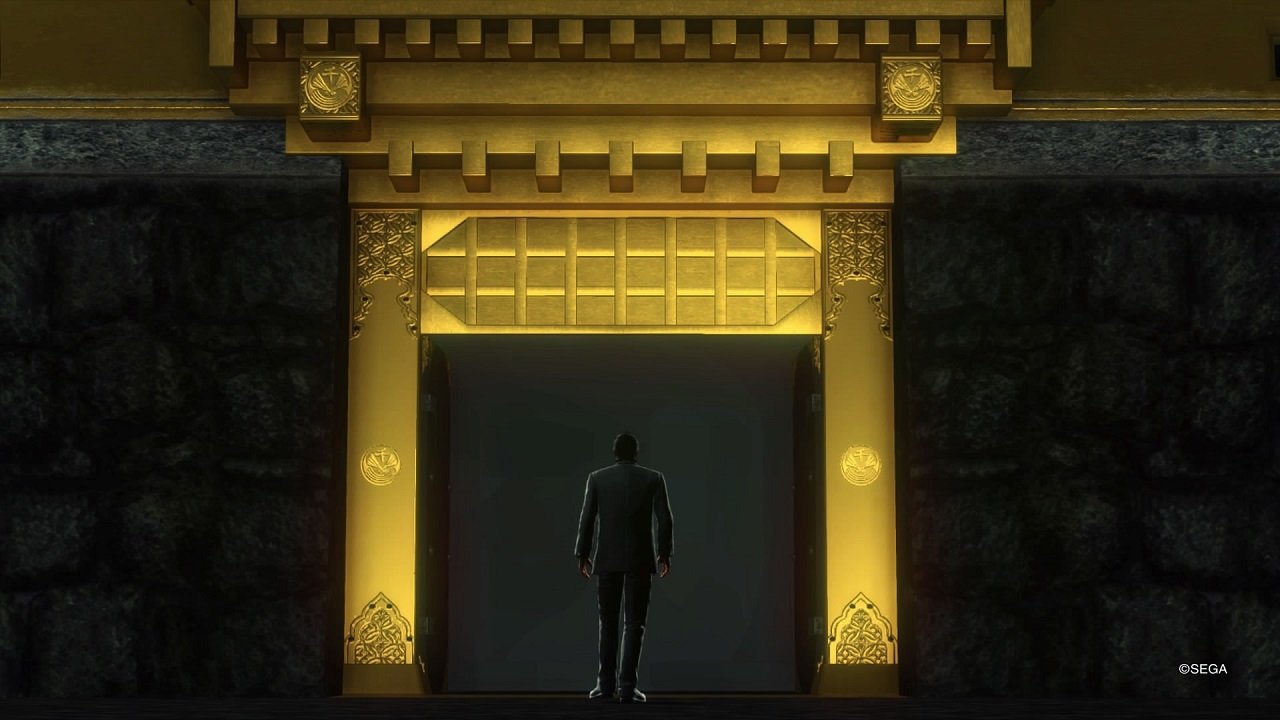
The Verdict
I came into Yakuza Kiwami 2 fearing what the Dragon Engine would do to it, but it turns out that was the one thing it needed to elevate it to the next level. The story was already top notch, and though some parts might have been weakened due to repurposed or altered content, it still is. And with the improved gameplay and presentation, what we’re left with is a solid remaster of an amazing game.
I don’t know where SEGA plans to go with the Yakuza series since we know 3, 4 and 5 aren’t getting Kiwami-style remasters, but I truly believe they’re at the cusp of greatness here. A game with 0’s combat styles, tone and minigames combined with Kiwami 2’s story, presentation and combat flow would be absolutely breathtaking. Perhaps that’s what Shin Yakuza will be like; but in the meantime, I’m more than happy with this.











Published: Aug 23, 2018 08:59 am